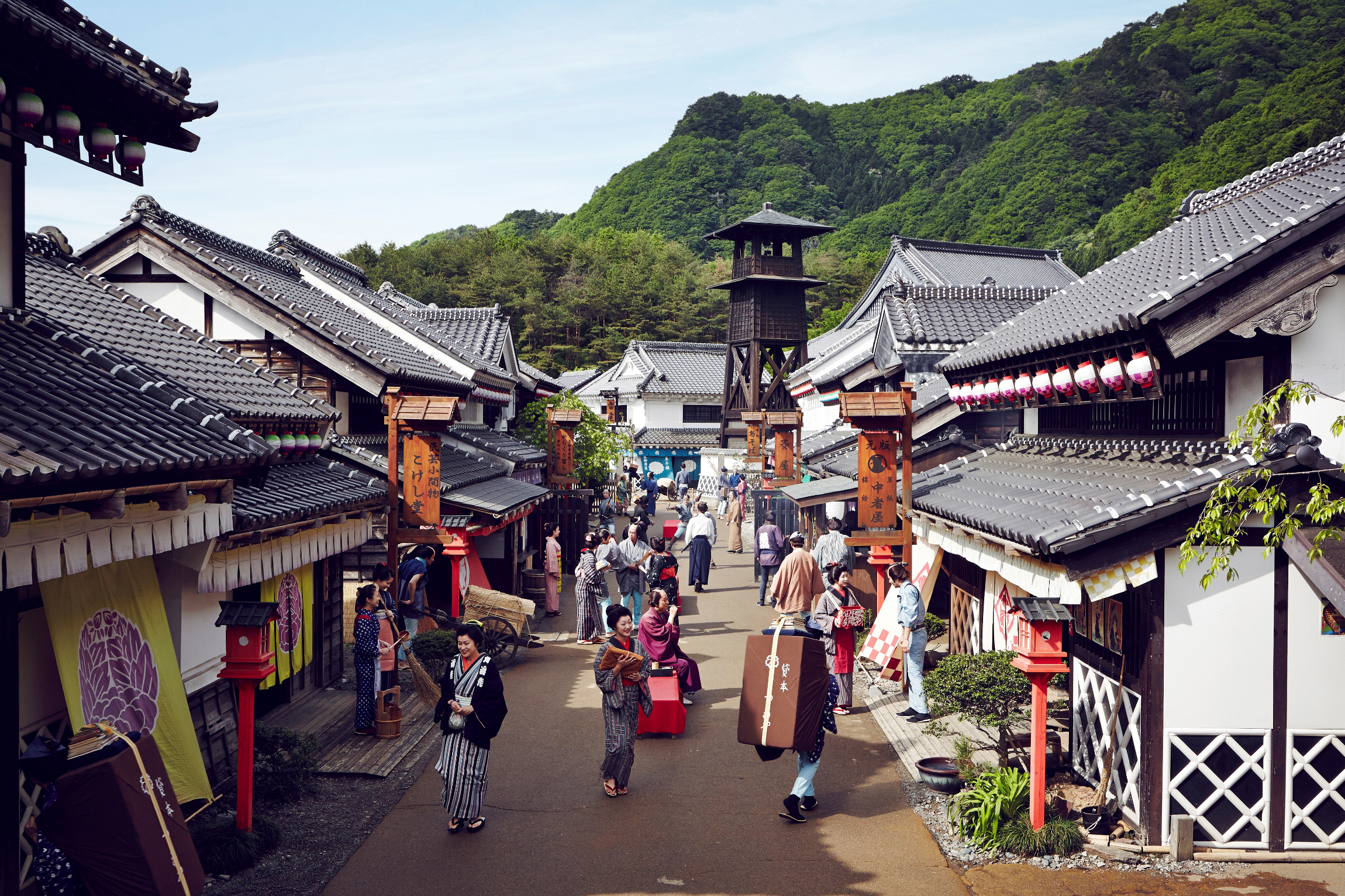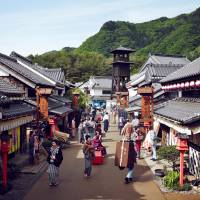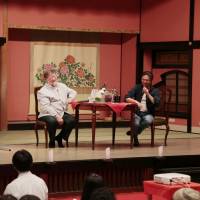A friend I've known for more than 20 years is now president of the Edo Wonderland Nikko Edomura cultural theme park in the Kinugawa Onsen area of Nikko, Tochigi Prefecture.
That friend, Ryoichi Yuki, is also an actor and singer who is well known for playing historical roles, and — being 43 years old, handsome, fit, strong and 180 centimeters tall — he makes a great samurai. Understandably, Yuki-san is an expert on the Edo Period in Japan, that 264-year span from 1603 to 1867 when the country was ruled by shoguns from the Tokugawa family, and which takes its name from the fishing village named Edo they chose for their seat of power — and which soon became the nation's largest city.
From being home to around 60,000 people in 1600, Edo (present-day Tokyo) reached a population of at least 1 million by 1720 — far more than any of the capital cities of Europe — and then some 1.4 million by 1860.
During that long and peaceful, but very strict period of rule by the shogunate, Japan's population likely remained steady at around 30 million, while — apart from a small and very restricted area in Nagasaki where foreign traders were allowed to stay and dock their ships — the whole country was almost entirely closed off by law from the outside world for all those years. As a result, it was necessarily totally self-sufficient. Nothing, including human excrement (used as fertilizer), was wasted.
Edo Wonderland was set up in April 1986 by Yuki-san's father, who is now retired. Built like a small Edo-style town, the theme park is populated by a staff re-enacting Edo Period speech and mannerisms and wearing the clothes of its lower, middle and samurai classes. It has shops, small eateries, theaters, museums and exhibitions, with ninja staging mock fights and geisha parading through the streets.
If visitors want to do so, they can dress up as samurai, townsfolk, geisha, upper-class ladies, whatever. It's actually a lot of fun, especially for kids, and as the staff are all actors in their own way, I enjoyed playing the time-slip game with them — though in truth, if a bearded, ruddy-faced old white guy had turned up in the real Edo, he'd probably have had his head chopped off.
Since the buildings, implements and everything else are very accurate replicas, Edo Wonderland is often used for historical dramas, and it has also become popular with visitors from Taiwan and Thailand, many of whom can see movies or TV shows in which it's featured on their screens at home. The total area of the site is just less than 50 hectares, more than half of which is forest — some of it mixed deciduous trees, and the rest mainly conifers known in Japanese as sugi (Cryptomeria japonica, aka Japanese cedar).
For quite some time now I have been suggesting to Yuki-san that he should extend the Edo Period theme to the woods as well. Before the Tokugawa Shogunate took over at the start of the 17th century, with all the wars, the castle-building and construction of great temples back then — and with towns and cities often being razed by fire — Japan's forests were in dire straits. Big cities demanded a lot of wood for fuel, building, furniture and so on, and the stress put on farmers and other country folk was severe.
Around 1670, villagers responded to the forest crisis by refining the management of their satoyama (forest margins) to supply many daily needs such as wild herbs and vegetables, and by coppicing trees to provide a steady supply of firewood — while also systematically planting Japanese cedars and hinoki (Chamaecyparis obtusa, aka Japanese cypress) to meet the demands of their rulers.
From then on, silviculture, social institutions for land use, improved ways of harvesting and marketing timber, as well as methods for preventing erosion on steep slopes or river banks, became common and remarkably advanced.
During this time, many books and treatises were also written about such things, and the government encouraged forestry and land-use experts to tour the land, lecturing and teaching the country people.
Meanwhile, even in those days the quality of Japanese steel was outstanding and its swords were (and remain) unsurpassed in quality. Even ax heads, hatchets and cleavers were made with three layers of laminated steel, with a hard carbon layer in the middle and softer, easily sharpened ones on the outside. Similarly, in the Edo Period every kind of carpentry or forestry tool known to the rest of the world was made to these high standards.
As a sideline, I'll tell you about a traditional natta (forester's cleaver) that I had made for HRH Prince Charles. The prince visited our woods in 2009, and was interested in Japanese forestry. He also likes traditional tools, and does a lot of British-style hedging himself and has the big, strong hands of a working countryman.
So, after I was invited to visit the prince at Highgrove, his country estate in Gloucestershire, England, in the summer of 2010, I got a local blacksmith to make a razor-sharp natta of just the right size and weight for Prince Charles' use, together with a traditional wooden sheath — one in which the natta rattles to warn off bears when you walk with it on your hip.
Then, when the time for my visit arrived, I made sure to inform HRH's chief of security about that special present, and I was able to take it. I'm not sure how many bears he's likely to encounter in the British Isles, but the prince was very pleased with his useful present from Japan.
Anyway, to get back to the Edo Period, I suggested to Yuki-san that as his woods at Edo Wonderland badly needed trimming out and tending, and as he certainly wouldn't want chainsaws or mechanical brush-cutters whining and roaring away in the background, he could create another attraction by drawing on the forest culture of the Edo Period and using its clothes, tools, foods and suchlike.
For example, they could make a charcoal kiln. They already use charcoal for cooking and heating, so why not take it to the shops, houses and the smithy the traditional way, wrapped in straw bags and delivered by horse?
Traditional country-style dwellings, and foresters' huts, had open fire pits which, if well maintained and watched, could be used in the woods, although fire regulations forbid open fires in the town. You could also have people making country foods from wild mountain vegetables, and let visitors try wild-herb tea together with these tidbits which, by the way, we commonly eat at home in Kurohime.
A mighty city like old Edo could not have existed without the food, water, cloth, bamboo utensils, baskets, wooden buckets and barrels, or the timber for building, that were sourced from the variety and wealth of the surrounding countryside, woodlands and forests.
So, reconnecting Edo Wonderland's town with its woodland would not only add another feature for visitors, but it would also attract research and draw media attention. I can be persuasive when I want to be, so I gave a lecture to more than 100 of Yuki-san's staff, and they liked what they heard. As a result, there will be an Edo Period-type forest at Edo Wonderland — and I'm really looking forward to seeing it grow and develop.
For more information on Edo Wonderland, visit edowonderland.net/en.



















With your current subscription plan you can comment on stories. However, before writing your first comment, please create a display name in the Profile section of your subscriber account page.